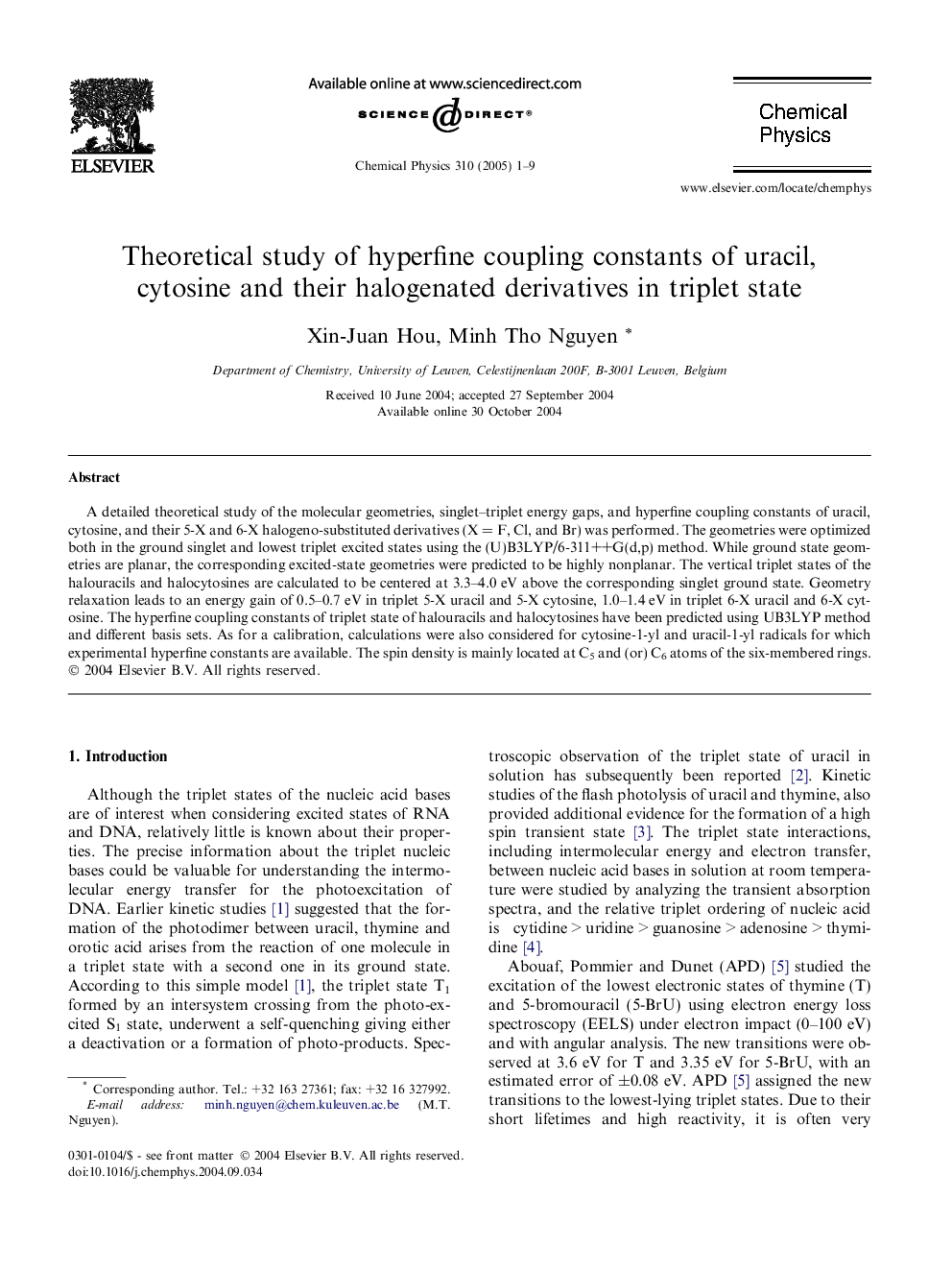| Article ID | Journal | Published Year | Pages | File Type |
|---|---|---|---|---|
| 9575437 | Chemical Physics | 2005 | 9 Pages |
Abstract
A detailed theoretical study of the molecular geometries, singlet-triplet energy gaps, and hyperfine coupling constants of uracil, cytosine, and their 5-X and 6-X halogeno-substituted derivatives (XÂ =Â F, Cl, and Br) was performed. The geometries were optimized both in the ground singlet and lowest triplet excited states using the (U)B3LYP/6-311++G(d,p) method. While ground state geometries are planar, the corresponding excited-state geometries were predicted to be highly nonplanar. The vertical triplet states of the halouracils and halocytosines are calculated to be centered at 3.3-4.0 eV above the corresponding singlet ground state. Geometry relaxation leads to an energy gain of 0.5-0.7 eV in triplet 5-X uracil and 5-X cytosine, 1.0-1.4 eV in triplet 6-X uracil and 6-X cytosine. The hyperfine coupling constants of triplet state of halouracils and halocytosines have been predicted using UB3LYP method and different basis sets. As for a calibration, calculations were also considered for cytosine-1-yl and uracil-1-yl radicals for which experimental hyperfine constants are available. The spin density is mainly located at C5 and (or) C6 atoms of the six-membered rings.
Related Topics
Physical Sciences and Engineering
Chemistry
Physical and Theoretical Chemistry
Authors
Xin-Juan Hou, Minh Tho Nguyen,
